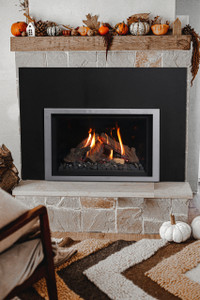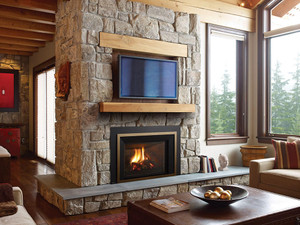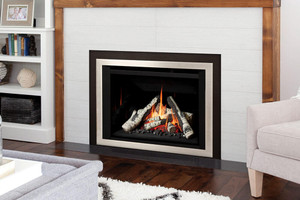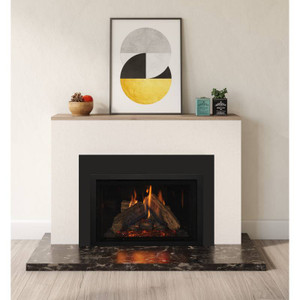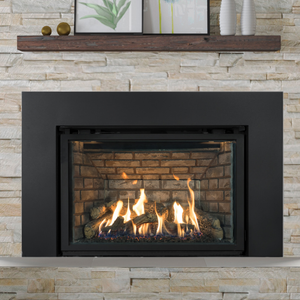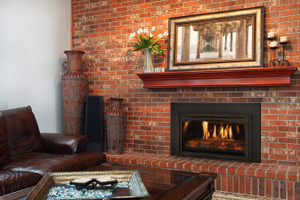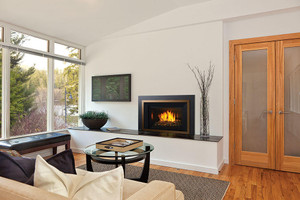
Gas Fireplace Inserts: Your Complete Guide to Comfort and Efficiency
Gas fireplace inserts offer a practical and efficient solution for transforming an outdated, inefficient wood-burning fireplace into a cost-effective heating source. These inserts are self-contained units designed to fit into existing fireplaces, minimizing the need for major renovations. Available in different fuel types such as natural gas, propane, and dual fuel options, gas fireplace inserts bring the convenience of gas to the charm and comfort of a traditional hearth. Known for their ease of use, units often come with features like remote control operation, adjustable flame settings, and blowers to distribute heat more evenly.
The variety of gas fireplace inserts in the market caters to a broad range of aesthetic preferences and functional requirements. From traditional to contemporary designs, homeowners can select models that complement their home décor while providing significant heating efficiency improvements over old fireplaces. Direct vent gas fireplace inserts are particularly noteworthy for their ability to reduce drafts and improve indoor air quality by using a sealed combustion system that expels exhaust directly outside, eliminating the need for a traditional chimney.
When considering a gas fireplace insert, consumers take into account factors such as cost, installation requirements, venting systems, and heat output. The initial investment can vary greatly depending on the model, features, and installation complexity, with cost-effectiveness becoming apparent through reduced heating bills over time. Whether one opts for a basic model or a high-end unit with a blower, the decision to upgrade to a gas fireplace insert is often driven by the desire for a cleaner, more efficient, and easier to maintain heating source.
Types and Features
Choosing the right gas fireplace insert involves understanding the various types available and their distinct features. These options cater to different aesthetic preferences, installation requirements, and heating efficiencies, providing solutions for a myriad of home heating needs.
Vented and Vent-Free Inserts
Vented gas inserts require a flue or chimney, ensuring that exhaust from combustion is released outside the home. These inserts are known for their realistic flame patterns and high efficiency. Vent-free, or ventless, gas inserts can operate without an external vent, making installation more versatile, but they also have strict size and venting regulations due to the exhaust being emitted into the indoor air.
Modern and Contemporary gas fireplace insert Styles
Modern gas fireplace inserts boast clean lines, minimalist designs, and often incorporate advanced flame technology with less visible venting mechanisms. Contemporary styles merge traditional warmth with modern aesthetics, featuring sleek fronts and decorative elements that can transform any space into a stylish focal point.
Inserts with Blowers
Gas fireplace inserts with blowers are equipped to distribute heat more evenly throughout the room. Blowers force the warm air out into the living space, increasing the overall efficiency of the insert. These inserts often come with variable speed controls for customized comfort levels.
Fuel Varieties and Efficiency
You can find Natural gas or propane fireplace insert. Natural gas fireplace inserts are popular for their convenience and are typically connected to the home's existing gas lines. Propane inserts are ideal for homes without natural gas, offering comparable heat output. Both types are energy-efficient, reducing overall heating costs while providing ample warmth.
Installation and Maintenance
Professional installation is essential for safety and optimal performance of gas fireplace inserts. Annual maintenance checks are recommended to ensure the continued efficient and safe operation of the unit. Regular tasks include cleaning, inspection of components, and verification of venting systems to avoid hazardous situations.
Finding the ideal unit to upgrade your home can be facilitated by exploring the comprehensive fireplace options available at LuxuryFire.com.
Cost and Considerations
When considering a gas fireplace insert, homeowners should evaluate the upfront cost, the fit for their existing fireplace, customization options, and compliance with safety standards and local regulations.
Pricing and Budgeting
The cost of gas fireplace inserts can vary widely, with a typical range of $2,000 to $5,000 for the unit.
Sizing and Fit
Proper sizing is crucial for a gas fireplace insert to function efficiently and safely. Inserts must match the dimensions of the existing fireplace opening. An ill-fitting insert can lead to heat loss and improper ventilation. It's recommended to have a professional measure and assess the fireplace to ensure the correct size insert is purchased and installed.
Aesthetics and Customization
Gas fireplace inserts come in various designs, from traditional to contemporary. Homeowners can choose from options with or without a blower, different flame patterns, and log configurations. Aesthetics can also be customized with surrounding panels and facades to complement the home's interior design.
Safety and Regulations
Safety is paramount with gas fireplace inserts. They must meet local building codes and manufacturer's guidelines for ventilation and clearances. Vented gas fireplace inserts require an exhaust to the outside, while vent-free models have strict room size and ventilation requirements. Professional installation ensures compliance with safety standards and local regulations.
Frequently Asked Questions
Gas fireplace inserts offer increased efficiency and convenience. This section addresses common inquiries potential buyers may have.
What are the benefits of installing a gas fireplace insert with a blower?
A gas fireplace insert with a blower efficiently circulates warm air throughout the room, enhancing heat distribution and reducing hot and cold spots.
How does a direct vent gas fireplace insert differ from a vented gas insert?
Direct vent gas fireplace inserts draw fresh air from outside and expel combustion gases through a dual-chambered flue system, while vented gas inserts use existing chimney flues for exhaust.
Can you recommend features to look for in the best gas fireplace insert models?
One should consider efficiency ratings, adjustable heat settings, a reliable ignition system, and a thermostat for temperature control when selecting the best gas fireplace insert models.
Is it possible to install a gas log insert in an existing wood-burning fireplace?
It is possible to install a gas log insert in an existing wood-burning fireplace, provided the dimensions are compatible and the installation is carried out by professionals to ensure safety and compliance with local codes.
What should I consider when choosing between a vented and vent-free gas fireplace insert?
When choosing between vented and vent-free gas fireplace inserts, consider the local building codes, room size, ventilation, and personal preference for flame appearance and heat output.
How do I find reputable gas fireplace insert installation services near me?
To find reputable gas fireplace insert installation services, one can check online reviews, verify certifications and licenses, and seek recommendations from manufacturers or local home improvement stores.
Will a gas fireplace work during a power outage?
Yes, Regency Natural Gas and Propane Fireplace inserts are equiped with a battery backup so they can wor during a power outage.




